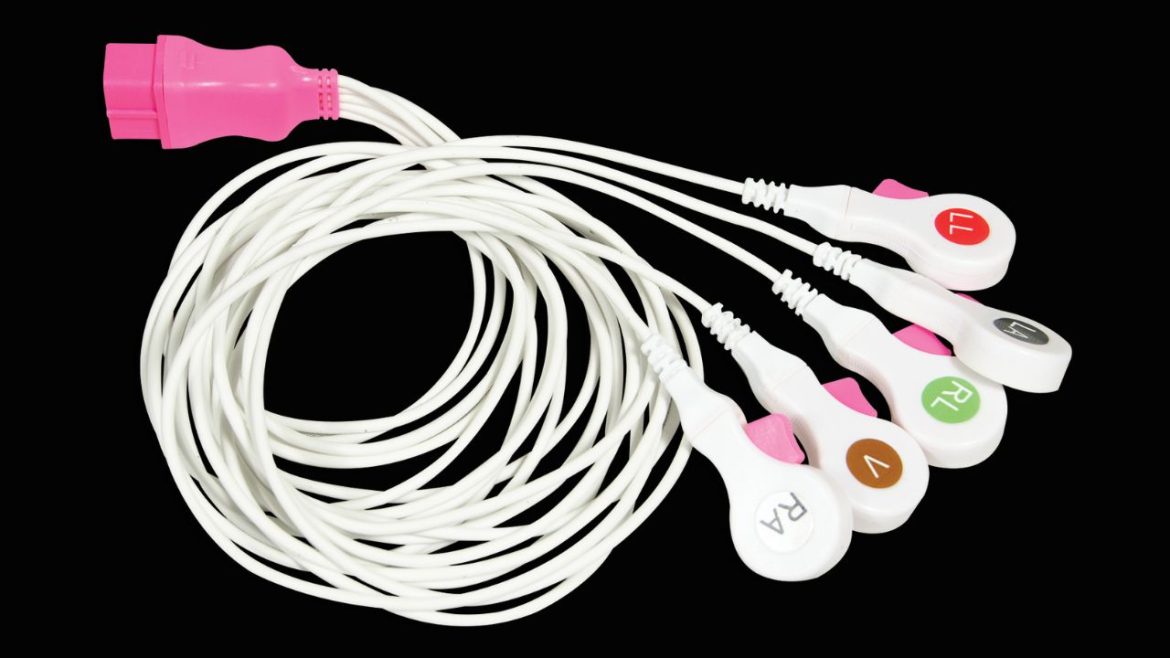The cables of the electrocardiogram (ECG) are critical in the examination of the electrical activity of the heart through proper diagnosis and patient safety. Not every ECG cable is, however, constructed similarly. Whereas ordinary cables can be used in simple monitoring tasks, the high-quality ECG cables can be used in advanced clinical needs, with longer durability and higher reliability. The distinction between the two types is also critical to hospitals, clinics, and distributors who want to be in the best position to find optimal solutions to their monitoring systems. Medke, a reputable supplier of medical accessories, offers a standard and high-end ecg cable that is designed to satisfy various requirements of the operation.
Material Quality and Durability
The greatest distinction between standard and premium ECG cables is the materials that are used in their production. Normal cables are made using simple-grade PVC materials that are flexible and are likely to wear out sooner when used regularly. Premium ECG cables, on the other hand, are produced with medical-grade TPU or silicone materials, which have greater resistance to abrasion, twisting, and repeated sterilization. Such materials provide a higher lifetime of the products and minimize internal wire damage. An example of the high quality of Medke ECG cables is that their high-quality cables have reinforced insulation and robust connectors, and can transmit signals under the rated hospital conditions.
Signal Accuracy and Electrical Performance
Proper cardiac monitoring requires proper transmission of signals. Normal ECG cables might not be very good in extreme circumstances, and they are not always sufficiently shielded to prevent the inclusion of outside electricity interruptions. This may cause noisy or unstable readings, especially in the high-frequency settings like the intensive care units. High-quality ECG cables are produced with multi-layer shielding and better conductive materials such as high-purity copper, so that the signals can be clear and without interference. The premium cables developed by Medke are created to provide stable and reliable data with a minimum number of diagnostic errors and unnecessary repeated tests as a result of bad signal quality.
Connector Design and Compatibility
The quality of connectors is also another aspect that makes a difference between premium and normal cables. Basic snap or clip connectors may be used in standard ECG cables, and they can loosen as time goes on, exposing the risks of losing or losing signal. Premium ECG cables have finely tuned connectors that are precise, and they fit securely as well as interact easily with patient monitors. Medke has a premium line that is compatible with the major monitoring systems. This is a major compatibility that enables healthcare providers to add the cables to the already available systems without necessarily risking downtime and errors associated with incompatible connectors.
Longevity and Cost Efficiency
Although the standard ECG cables are cheaper in the short run, their low life cycle and failure rate tend to increase their cost of replacement in the long run. Better quality ECG cables would cost more initially, but would have a longer life cycle and would be more reliable, thus lowering the total cost of ownership. When hospitals invest in high-end solutions, their cable breakdowns are less frequent, maintenance requirements are lower, and they experience less intermittent monitoring performance. The quality and cost efficiency in the premium ECG cables of Medke are a good example of achieving this balance, which provides reliable operation to facilitate long-term value.
Quality Assurance and Certification
High-quality ECG cables are manufactured in accordance with higher quality control than regular versions. Other manufacturers (such as Medke) also follow the ISO 13485-certified production processes and international standards such as CE and FDA, as well as making sure that every product satisfies the highest safety and performance standards. Basic local standards might be met by standard cables; however, superior cables are extensively tested to verify electrical safety, durability, and biocompatibility. This secures their work in a broad spectrum of clinical procedures such as intensive care, surgical units, and extended care.
Conclusion
There is so much more than the price difference between regular and high-end ECG cables. High-quality cables are more durable, have better signal quality, shielding, and compatibility, which makes them more consistent in operation in challenging clinical environments. Basic requirements are typically satisfied by regular ECG cables, although in many cases, such cables cannot be counted upon to be reliable over the long run and offer sufficient safety to the patient. The finest union of engineering and material innovation is demonstrated through the premium ECG solutions of Medke that offer hospitals and distributors reliable tools to minimize downtime, maximize the quality of diagnoses, and lower the overall cost performance. To healthcare professionals who are dedicated to adhering to high standards of care, premium ECG cables are not a nice upgrade; they are a mandatory investment in their performance and stability.
